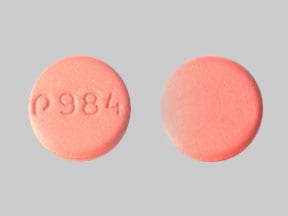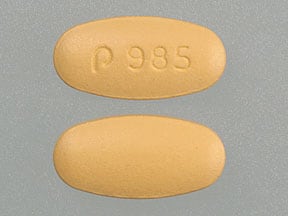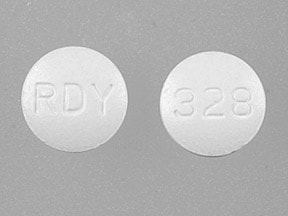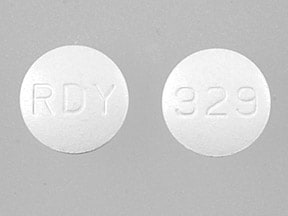Dosage Forms
Excipient information presented when available (limited, particularly for generics); consult specific product labeling.
Tablet, Oral:
Starlix: 60 mg, 120 mg
Generic: 60 mg, 120 mg
Pharmacology
Mechanism of Action
Nonsulfonylurea hypoglycemic agent which blocks ATP-dependent potassium channels, depolarizing the membrane and facilitating calcium entry through calcium channels. Increased intracellular calcium stimulates insulin release from the pancreatic beta cells. Nateglinide-induced insulin release is glucose-dependent.
Pharmacokinetics/Pharmacodynamics
Absorption
Rapid
Distribution
10 L
Metabolism
Hepatic via hydroxylation followed by glucuronide conjugation via CYP2C9 (70%) and CYP3A4 (30%) to metabolites, including M1 (a major metabolite)
Excretion
Urine (83%, 16% as unchanged drug); feces (10%)
Onset of Action
Insulin secretion: ~20 minutes; Peak effect: 1 hour
Time to Peak
≤1 hour
Duration of Action
4 hours
Half-Life Elimination
1.5 hours
Protein Binding
98%, primarily to albumin
Use in Specific Populations
Special Populations: Renal Function Impairment
Accumulation of M1, a major metabolite with modest hypoglycemic activity, was observed following repeated administration in patients with severe renal impairment (CrCl <17 mL/minute/1.73 m2). Hemodialysis sessions did significantly reduce M1 levels in these patients (Inoue 2003).
Special Populations: Hepatic Function Impairment
Cmax increased 37% and AUC increased 30% in patients with mild hepatic insufficiency.
Use: Labeled Indications
Diabetes mellitus, type 2: Treatment of adults with type 2 diabetes mellitus as an adjunct to diet and exercise to improve glycemic control
Contraindications
Hypersensitivity to nateglinide or any component of the formulation
Dosage and Administration
Dosing: Adult
Diabetes mellitus, type 2: Oral: Initial and maintenance dose: 120 mg 3 times daily before meals. Patients close to HbA1c goal at initiation of therapy may be started at 60 mg 3 times daily
Dosing: Geriatric
Refer to adult dosing.
Administration
Oral: Administer 1 to 30 minutes prior to meals. Scheduled dose should not be administered if a meal is missed to avoid hypoglycemia.
Dietary Considerations
Nateglinide should be taken 1 to 30 minutes prior to meals. Scheduled dose should not be taken if meal is missed to avoid hypoglycemia. Individualized medical nutrition therapy (MNT) based on ADA recommendations is an integral part of therapy.
Storage
Store at 25°C (77°F); excursions are permitted between 15˚C and 30˚C (59˚F and 86˚F).
Nateglinide Images
Drug Interactions
Alpelisib: May decrease the serum concentration of CYP2C9 Substrates (High risk with Inducers). Monitor therapy
Alpha-Lipoic Acid: May enhance the hypoglycemic effect of Antidiabetic Agents. Monitor therapy
Androgens: May enhance the hypoglycemic effect of Blood Glucose Lowering Agents. Exceptions: Danazol. Monitor therapy
Antidiabetic Agents: May enhance the hypoglycemic effect of Hypoglycemia-Associated Agents. Monitor therapy
CYP2C9 Inhibitors (Moderate): May increase the serum concentration of Nateglinide. Monitor therapy
Dabrafenib: May decrease the serum concentration of CYP2C9 Substrates (High risk with Inducers). Management: Seek alternatives to the CYP2C9 substrate when possible. If concomitant therapy cannot be avoided, monitor clinical effects of the substrate closely (particularly therapeutic effects). Consider therapy modification
Direct Acting Antiviral Agents (HCV): May enhance the hypoglycemic effect of Antidiabetic Agents. Monitor therapy
Eltrombopag: May increase the serum concentration of OATP1B1/1B3 (SLCO1B1/1B3) Substrates. Monitor therapy
Enzalutamide: May decrease the serum concentration of CYP2C9 Substrates (High risk with Inducers). Management: Concurrent use of enzalutamide with CYP2C9 substrates that have a narrow therapeutic index should be avoided. Use of enzalutamide and any other CYP2C9 substrate should be performed with caution and close monitoring. Consider therapy modification
Gemfibrozil: May increase the serum concentration of OATP1B1/1B3 (SLCO1B1/1B3) Substrates. See separate drug interaction monographs for agents listed as exceptions. Monitor therapy
Guanethidine: May enhance the hypoglycemic effect of Antidiabetic Agents. Monitor therapy
Herbs (Hypoglycemic Properties): May enhance the hypoglycemic effect of Hypoglycemia-Associated Agents. Monitor therapy
Hyperglycemia-Associated Agents: May diminish the therapeutic effect of Antidiabetic Agents. Monitor therapy
Hypoglycemia-Associated Agents: May enhance the hypoglycemic effect of other Hypoglycemia-Associated Agents. Monitor therapy
Hypoglycemia-Associated Agents: Antidiabetic Agents may enhance the hypoglycemic effect of Hypoglycemia-Associated Agents. Monitor therapy
Lumacaftor and Ivacaftor: May decrease the serum concentration of CYP2C9 Substrates (High Risk with Inhibitors or Inducers). Lumacaftor and Ivacaftor may increase the serum concentration of CYP2C9 Substrates (High Risk with Inhibitors or Inducers). Monitor therapy
Maitake: May enhance the hypoglycemic effect of Blood Glucose Lowering Agents. Monitor therapy
MiFEPRIStone: May increase the serum concentration of CYP2C9 Substrates (High risk with Inhibitors). Management: Use CYP2C9 substrates at the lowest recommended dose, and monitor closely for adverse effects, during and in the 2 weeks following mifepristone treatment. Consider therapy modification
Monoamine Oxidase Inhibitors: May enhance the hypoglycemic effect of Blood Glucose Lowering Agents. Monitor therapy
Pegvisomant: May enhance the hypoglycemic effect of Blood Glucose Lowering Agents. Monitor therapy
Prothionamide: May enhance the hypoglycemic effect of Blood Glucose Lowering Agents. Monitor therapy
Quinolones: May enhance the hypoglycemic effect of Blood Glucose Lowering Agents. Quinolones may diminish the therapeutic effect of Blood Glucose Lowering Agents. Specifically, if an agent is being used to treat diabetes, loss of blood sugar control may occur with quinolone use. Monitor therapy
Rifapentine: May decrease the serum concentration of CYP2C9 Substrates (High risk with Inducers). Monitor therapy
Ritodrine: May diminish the therapeutic effect of Antidiabetic Agents. Monitor therapy
Salicylates: May enhance the hypoglycemic effect of Blood Glucose Lowering Agents. Monitor therapy
Selective Serotonin Reuptake Inhibitors: May enhance the hypoglycemic effect of Blood Glucose Lowering Agents. Monitor therapy
Teriflunomide: May increase the serum concentration of OATP1B1/1B3 (SLCO1B1/1B3) Substrates. Monitor therapy
Thiazide and Thiazide-Like Diuretics: May diminish the therapeutic effect of Antidiabetic Agents. Monitor therapy
Tolvaptan: May increase the serum concentration of OATP1B1/1B3 (SLCO1B1/1B3) Substrates. Consider therapy modification
Adverse Reactions
As reported with nateglinide monotherapy:
>10%: Respiratory: Upper respiratory infection (11%)
1% to 10%:
Central nervous system: Dizziness (4%)
Endocrine & metabolic: Hypoglycemia (2%), increased uric acid, weight gain
Neuromuscular & skeletal: Arthropathy (3%)
Respiratory: Flu-like symptoms (4%)
Miscellaneous: Accidental injury (3%)
Postmarketing and/or case reports: Cholestatic hepatitis, hypersensitivity reaction (including pruritus, rash, urticaria), increased liver enzymes, jaundice
Warnings/Precautions
Concerns related to adverse effects:
- Hypoglycemia: May cause hypoglycemia; risk factors include inconsistent nutrition, physical activity changes, concomitant use with other antidiabetic therapy, ethanol use, renal impairment, and hepatic impairment. Appropriate patient selection, dosage, and patient education are important to avoid hypoglycemic episodes.
Disease-related concerns:
- Adrenal/pituitary impairment: Use with caution in patients with adrenal and/or pituitary impairment; may be more susceptible to glucose-lowering effects.
- Bariatric surgery:
– Altered absorption: Absorption may be altered given the anatomic and transit changes created by gastric bypass and sleeve gastrectomy surgery (Mechanick 2013; Mingrone 2016).
– Hypoglycemia: May increase the risk of hypoglycemia after gastric bypass, sleeve gastrectomy, and gastric band (Mechanick 2013). Insulin secretion and sensitivity may be partially or completely restored after these procedures (gastric bypass is most effective, followed by sleeve, and finally band) (Korner 2009; Peterli 2012). First-phase insulin secretion and hepatic insulin sensitivity have been shown to be significantly improved in the immediate days after gastric bypass and sleeve gastrectomy. The restorative effects of these procedures on peripheral insulin sensitivity may occur later in the 3- to 12-month period after surgery. Where possible, the selection of antidiabetic agents without the potential for hypoglycemia is advised.
- Hepatic impairment: Use with caution in patients with moderate-to-severe hepatic impairment due to risk of hypoglycemia.
- Renal impairment: Use with caution in patients with severe renal impairment; use may result in prolonged hypoglycemia due to accumulation of a metabolite with hypoglycemic activity (Inoue 2003).
- Stress-related states: It may be necessary to discontinue nateglinide and administer insulin if the patient is exposed to stress (eg, fever, trauma, infection, surgery).
Concurrent drug therapy issues:
- Drug-drug interactions: Potentially significant interactions may exist, requiring dose or frequency adjustment, additional monitoring, and/or selection of alternative therapy. Consult drug interactions database for more detailed information.
Other warnings/precautions:
- Appropriate use: Not for use in patients with diabetic ketoacidosis (DKA) or patients with type 1 diabetes mellitus.
Special populations:
- Malnourished patients: Use with caution in malnourished patients; may be more susceptible to glucose-lowering effects.
Monitoring Parameters
Weight, lipid profile, fasting blood glucose (periodically and during dosage titration), and HbA1c (at least twice yearly in patients who have stable glycemic control and are meeting treatment goals; quarterly in patients not meeting treatment goals or with therapy change [ADA 2019]).
Pregnancy
Pregnancy Risk Factor
C
Pregnancy Considerations
Information describing the effects of nateglinide on pregnancy outcomes is limited (Twaites 2007).
Poorly controlled diabetes during pregnancy can be associated with an increased risk of adverse maternal and fetal outcomes, including diabetic ketoacidosis, preeclampsia, spontaneous abortion, preterm delivery, delivery complications, major birth defects, stillbirth, and macrosomia (ACOG 201 2018). To prevent adverse outcomes, prior to conception and throughout pregnancy, maternal blood glucose and HbA1c should be kept as close to target goals as possible but without causing significant hypoglycemia (ADA 2020; Blumer 2013).
Agents other than nateglinide are currently recommended to treat diabetes mellitus in pregnancy (ADA 2020).
Patient Education
What is this drug used for?
- It is used to lower blood sugar in patients with high blood sugar (diabetes).
Frequently reported side effects of this drug
- Common cold symptoms
Other side effects of this drug: Talk with your doctor right away if you have any of these signs of:
- Low blood sugar like dizziness, headache, fatigue, feeling weak, shaking, fast heartbeat, confusion, increased hunger, or sweating.
- Signs of a significant reaction like wheezing; chest tightness; fever; itching; bad cough; blue skin color; seizures; or swelling of face, lips, tongue, or throat.
Note: This is not a comprehensive list of all side effects. Talk to your doctor if you have questions.
Consumer Information Use and Disclaimer: This information should not be used to decide whether or not to take this medicine or any other medicine. Only the healthcare provider has the knowledge and training to decide which medicines are right for a specific patient. This information does not endorse any medicine as safe, effective, or approved for treating any patient or health condition. This is only a brief summary of general information about this medicine. It does NOT include all information about the possible uses, directions, warnings, precautions, interactions, adverse effects, or risks that may apply to this medicine. This information is not specific medical advice and does not replace information you receive from the healthcare provider. You must talk with the healthcare provider for complete information about the risks and benefits of using this medicine.










